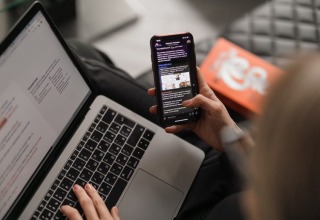DeFi (Decentralized Finance) is merging with the art world, revolutionizing how art is created, owned, and traded. Additionally, if you want to know more about investments and firms, you may visit quantum ai.
How DeFi is revolutionizing the art world
DeFi, or Decentralized Finance, is fundamentally transforming the art world in several remarkable ways, says OECD. By leveraging blockchain technology, DeFi introduces a new paradigm of ownership, trading, and valuation of art, particularly with the advent of Non-Fungible Tokens (NFTs). This shift is not merely a technological one but also a cultural and economic revolution, altering how artists create, share, and monetize their work.
One of the most significant impacts of DeFi in the art world is the democratization of art ownership and investment. Traditionally, investing in high-value art was a privilege reserved for the wealthy and well-connected. However, DeFi platforms allow for the tokenization of artworks, enabling fractional ownership. This means that art pieces, once considered unattainable assets, are now accessible to a broader audience. Investors can purchase tokens representing a share of an artwork, allowing for a more inclusive art market.
Another pivotal change brought by DeFi is in the authenticity and provenance tracking of artworks. The blockchain’s immutable ledger ensures that the history of each piece is transparent and tamper-proof. This level of traceability was previously challenging to achieve and is particularly valuable in an industry plagued by forgeries and disputes over ownership. Artists can now provide indisputable proof of authenticity and ownership history, increasing trust and value in the art market.
Furthermore, DeFi has opened new avenues for artists to monetize their work. Through the use of smart contracts, artists can receive royalties automatically every time their art is resold. This is a game-changer, especially in the digital art space, where replicating and sharing art is effortless. Artists can now maintain a stake in their work’s future value, which was often lost in traditional art market structures.
Moreover, the introduction of NFTs, unique digital tokens that signify ownership of a digital asset, has created a new marketplace for digital art. NFTs have exploded in popularity, with some digital artworks selling for millions. This has not only provided a new revenue stream for digital artists but also elevated digital art to the same status as traditional art forms in the eyes of collectors and investors.
Case studies of successful DeFi and art collaborations
One notable example is the collaboration between Beeple, a renowned digital artist, and the NFT marketplace. Beeple’s artwork, “Everyday: The First 5000 Days,” a collage of digital images created over 5000 days, was tokenized and sold as an NFT for a staggering $69 million at Christie’s auction (read more). This sale not only set a record for digital art but also showcased the power of NFTs in legitimizing digital art as a valuable asset. The use of blockchain technology in this instance provided undeniable proof of authenticity and ownership, crucial in the digital art space.
Another significant case is the Art Blocks platform, which hosts generative art projects. Artists create algorithms that generate unique pieces of art when minted as NFTs. Collectors purchase not a pre-determined piece, but the opportunity for the algorithm to create something unique at the point of sale. This approach has revolutionized the concept of art creation and collection, blending creativity with the unpredictability of code, resulting in a new form of interactive and dynamic art.
A third example involves the fractional ownership of high-value physical artworks through tokenization. Platforms like Maecenas allow users to buy shares of famous artworks, like Andy Warhol’s “14 Small Electric Chairs,” by purchasing tokens representing a fraction of the piece. This democratizes access to high-value art investments, traditionally reserved for the elite, and also brings liquidity to the art market, allowing for easier trading and valuation of art pieces.
In the realm of philanthropy, DeFi has enabled new forms of fundraising and support for the arts. For instance, Aave, a DeFi lending platform, partnered with various artists to create NFTs that were auctioned off. The proceeds were then used to fund grants for artists struggling due to the COVID-19 pandemic. This novel approach to fundraising highlighted how DeFi could be leveraged for social good, supporting the arts community in challenging times.
Lastly, the emergence of virtual galleries and exhibitions in decentralized virtual spaces exemplifies another dimension of DeFi’s impact. These spaces allow artists to showcase their NFTs in a digital environment accessible to anyone worldwide, breaking down geographical and physical barriers to art exhibitions.
Conclusion
DeFi’s integration into the art world represents a significant paradigm shift, democratizing art ownership and fostering creative innovations. As this new frontier evolves, it continues to reshape the art market, offering unprecedented opportunities for artists and investors alike.
Last Updated: December 13, 2023




















